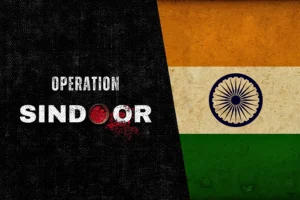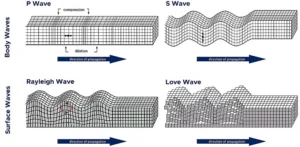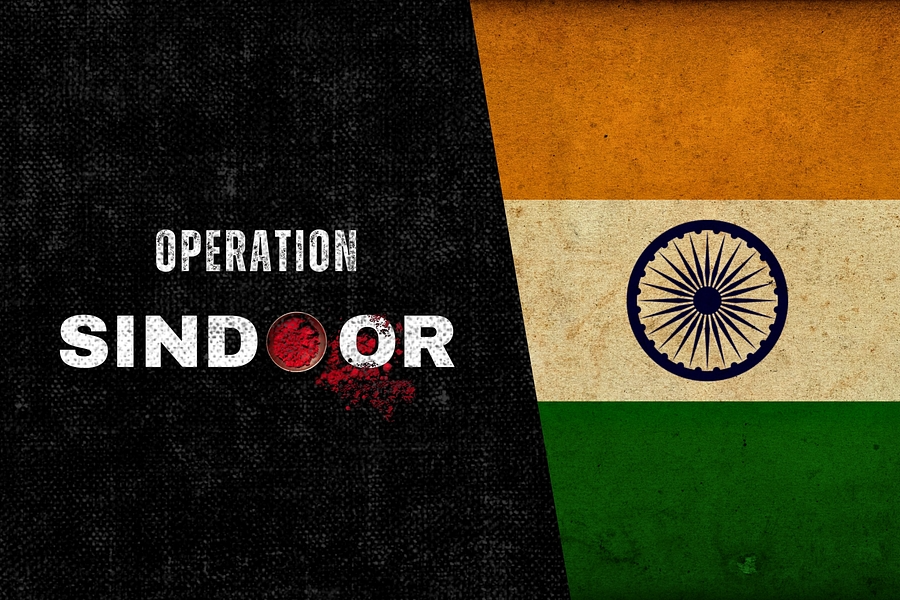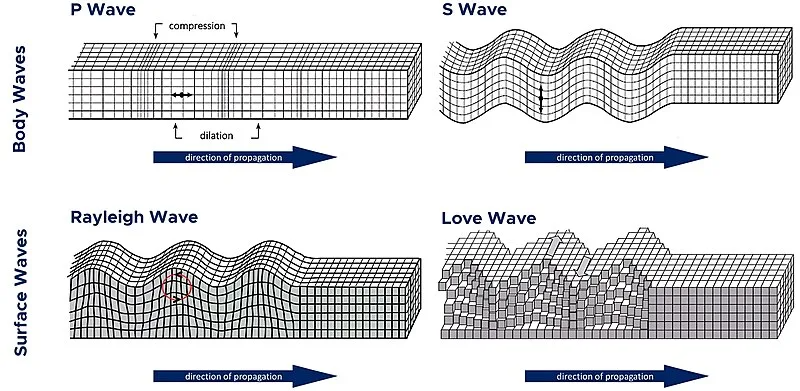July 28th Current Affairs
Table of Contents

Operation Sindoor
July 21st Current Affairs Home / Operation Sindoor Why in News? Parliament’s Monsoon Session, starting July 21, 2025, is expected to feature

Alaska Earthquakes
July 21st Current Affairs Home / Alaska Earthquakes Why in News? On July 21, 2025, Alaska Peninsula was struck by

August 2, 2027 Solar Eclipse
July 21st Current Affairs Home / August 2, 2027 Solar Eclipse Why in News? A total solar eclipse is set

India’s milestone in clean energy transition
July 21st Current Affairs Home / India’s milestone in clean energy transition Why in News? India achieved a milestone by

‘Baby Grok’, child-friendly AI app
July 21st Current Affairs Home / ‘Baby Grok’, Child-friendly AI app Why in News? Elon Musk’s AI company xAI has announced

Impeachment proceedings against Justice Yashwant Verma
July 22nd Current Affairs Home / Impeachment proceedings against Justice Yashwant Verma Context On July 22, 2025, impeachment proceedings against
The Indian Textile Sector under Make in India
Context
India’s textile and apparel sector is undergoing a significant transformation under the Make in India initiative. With growing exports, robust policy support, and infrastructure development such as PM MITRA Parks, India is positioning itself as a global leader in textile manufacturing. The sector witnessed a 7% increase in textile exports from April to December 2024 compared to the previous year, reflecting policy efficacy.
Background
India’s textile industry is one of the oldest and most significant economic sectors, contributing 2.3% to the national GDP, 13% to industrial production, and 12% to total exports. With over 45 million direct jobs and 80% of capacity in MSME clusters, it is a key pillar of inclusive development. India’s textile exports in 2023–24 stood at US$ 34.4 billion.
Government Measures
- PLI Scheme for Textiles – ₹10,683 crore to incentivize large-scale production in Man-Made Fibres and technical textiles.
- PM MITRA Parks – ₹4,445 crore to develop seven world-class textile hubs with integrated infrastructure.
- ATUFS (Amended Technology Upgradation Fund Scheme )– ₹17,822 crore for technology upgradation through capital subsidy.
- Samarth Scheme – Focused on skilling, with 3.82 lakh trained and 2.97 lakh placed.
- NTTM (National Technical Textiles Mission )– ₹1,480 crore to promote technical textiles and R&D.
- Export Promotion Tools – RoSCTL (Rebate of State and Central Taxes and Levies), FTAs, Quality Control Orders, and EPCs (Export Promotion Centers).
- Budget 2025–26 – ₹5,272 crore allocation, 19% higher than the previous year.
Reasons for Textile Sector Push
- Job generation potential in rural and semi-urban areas.
- Value addition across the value chain (farm to fashion).
- Foreign exchange earnings through high-value exports.
- Reducing import dependency in MMF and technical textiles.
- Enhancing global competitiveness and integration into Global Value Chains.
Significance
- Strategic: Second largest employer after agriculture.
- Social: Promotes women’s participation and rural empowerment.
- Economic: MSME-intensive sector aiding inclusive growth.
- Global: India is 6th largest exporter globally; aims to triple exports to ₹9 lakh crore by 2030.
Definition of Technical Terms
- Technical Textiles: Textile materials used for functional purposes in industries (e.g., geotextiles, agrotech, meditech).
- MMF (Man-Made Fibres): Synthetic fibres like polyester, viscose, acrylic.
- PLI: Production Linked Incentive, a government scheme offering financial rewards based on output.
- PM MITRA: Mega Integrated Textile Region and Apparel Parks.
Impact on India and the World
India:
- Strengthening manufacturing capabilities.
- Upskilling youth through Samarth.
- Emerging as a technical textile innovation hub.
World:
- Diversifying global supply chains (China+1).
- Reducing overdependence on Chinese textiles.
- India emerging as an alternative supplier for Western markets.
Challenges
- Fragmentation in value chain across states.
- High cost of credit and logistics.
- Raw material price volatility (cotton, synthetic fibres).
- Global competition from Bangladesh and Vietnam.
- Regulatory overlaps and poor compliance in MSME clusters.
Vietnamese Influence
Vietnam has rapidly emerged as a textile export powerhouse, leveraging:
- FTAs with US and EU.
- Low wage costs.
- Focus on high-end synthetic textiles.
- India can learn from its centralized infrastructure and trade diplomacy
Way Forward
- Cluster Consolidation: Expand MITRA parks and link MSMEs to them.
- Export Intelligence: Aggressive trade diplomacy to secure FTAs (e.g., India-EU FTA).
- Innovation Drive: Accelerate R&D and IP creation in technical textiles.
- Credit and Infra Support: Broaden concessional credit and upgrade logistics.
- Skill-Policy Sync: Integrate Samarth with National Skill Qualification Framework.
Prelims MCQ
Q. With reference to India’s Textile and Apparel Industry, consider the following statements:
- Over 80% of textile sector capacity in India is based in MSME clusters.
- The PM MITRA scheme focuses exclusively on the production of handloom textiles.
- India is the second largest exporter of textile and apparel globally.
Which of the above statements is/are correct?
A. 1 only
B. 1 and 3 only
C. 2 and 3 only
D. 1, 2 and 3
Answer: A. 1 only
Explanation:
- Statement 1 is correct: The Indian textile sector is largely MSME-driven, with nearly 80% of the manufacturing capacity located in MSME clusters. This decentralized structure is also a reason for the sector’s inclusivity and employment potential.
- Statement 2 is incorrect: The PM MITRA scheme is not restricted to handloom production. It focuses on the development of integrated mega textile parks for the entire value chain—from fibre to finished garments, including spinning, weaving, dyeing, and apparel manufacturing.
- Statement 3 is incorrect: India is the 6th largest exporter of textiles and apparel globally, not the second. However, India is the 2nd largest producer and consumer of cotton and the 2nd largest silk producer globally.
Mains Question
Q. The textile sector under Make in India has witnessed significant transformation in terms of policy reforms. Critically analyse the sector in the context of global competition and employment generation. (250 words)
Haridwar Mansa Devi Temple Stampede – A Tragedy of Mismanagement
Context
On July 27, 2025, a stampede at Haridwar’s Mansa Devi Temple led to the death of 8 devotees and injuries to over 30 others. The incident was reportedly triggered by panic caused by a rumour that a live electric wire had snapped. This tragedy, occurring at one of India’s most frequented pilgrimage sites, brings attention to gaps in crowd management and disaster preparedness at religious events.
Background
The Mansa Devi temple, situated atop the Sivalik Hills in Uttarakhand at 1,770 feet, is one of the most visited Shakti Peethas in northern India. Devotees, especially on weekends and during festivals, throng the narrow stairway route to seek blessings. On July 27, a massive crowd had gathered, which, due to lack of coordination and crowd control, resulted in a human crush once panic set in.
Reasons for the Stampede
- Overcrowding: A sudden surge in visitors during the Shravan month.
- Inadequate Crowd Control: Narrow stairways, lack of alternate entry/exit points.
- Rumour-induced Panic: A rumour about an electric wire snapping created fear.
- Poor Communication: No real-time public announcement systems or crowd regulation infrastructure.
- Delayed Response: Absence of on-site emergency response mechanisms led to chaos.
Significance of the Incident
- Human Tragedy: Loss of life, injuries, and trauma for pilgrims.
- Religious Sentiment: Distress caused at a holy site of national importance.
- Administrative Accountability: Exposed gaps in preventive planning despite past incidents.
- Economic Cost: Medical compensation, rescue operations, and tourism setbacks.
Definition of Technical Terms
- Stampede: A sudden panicked rush of people, usually in confined spaces, causing crushing injuries.
- Magisterial Inquiry: A formal investigation led by a magistrate (usually an SDM) to ascertain causes and accountability.
- SDRF: State Disaster Response Force; a specialized disaster rescue unit at the state level.
NDMA (2014) Guidelines on Crowd Management
- Risk Assessment: Identification of choke points and bottlenecks.
- Dedicated Command Centre: For communication and surveillance.
- Entry-Exit Regulation: Multiple gates with unidirectional flow.
- Technology Use: CCTV surveillance, drones, GIS mapping.
- Volunteers/Marshals: Deployment for crowd control and real-time management.
- Mock Drills: Regular drills to prepare staff and volunteers.
Despite clear guidelines, implementation remains weak at the ground level, particularly in tier-2 religious hubs.
Socio-economic Nuance
Poor crowd management disproportionately affects economically weaker pilgrims who travel without organized groups or access to private safety arrangements. Families from rural areas, often women and elderly, are more vulnerable due to lack of awareness and mobility in such situations.
Challenges
- Infrastructural Bottlenecks: Narrow staircases, no alternate evacuation routes.
- Lack of Coordination: Poor integration between temple trusts, police, and administration.
- Volunteer Shortage: Absence of trained personnel to manage crowds.
- Reactive Governance: Action follows tragedy rather than anticipation.
- Religious Tourism Boom: Growing pilgrim inflows not matched with safety upgrades.
Global Best Practices
- Saudi Arabia – Hajj Management: RFID wristbands, crowd density monitoring through AI, and real-time updates.
- Japan – Gion Festival: Use of trained marshals, timed entry slots, and mobile alert systems.
- Singapore – Thaipusam Festival: Electronic queue systems, public information kiosks, medical tents.
Way Forward
- Technology-Driven Planning: Smart surveillance, real-time crowd analytics.
- Structural Upgrades: Wider stairways, multi-tiered entry points, and buffer zones.
- Pilgrim Regulation: QR-based entry tokens during peak times.
- Mandatory SOPs: Enforcement of NDMA guidelines by temple committees and local governments.
- Training Modules: Regular crowd safety training for volunteers and officials.
- Cultural Sensitization: Awareness among devotees about safe behaviour in large gatherings.
Prelims MCQ
Q. Consider the following statements regarding crowd management in India:
- The National Disaster Management Authority (NDMA) has issued dedicated guidelines for crowd safety during mass gatherings.
- The State Disaster Response Force (SDRF) operates under the direct control of the Union Ministry of Home Affairs.
Which of the above is/are correct?
A. 1 only
B. 2 only
C. Both 1 and 2
D. Neither 1 nor 2
Answer: A. 1 only
Explanation:
- Statement 1 is correct: The NDMA released specific guidelines in 2014 titled “Managing Crowds in Events and Gatherings”, which provide a framework for planning, preparedness, and emergency response at large-scale events.
- Statement 2 is incorrect: The SDRF is a state-level force and functions under the state government’s disaster management department, not the Union Ministry of Home Affairs. While the National Disaster Response Force (NDRF) operates under the MHA, SDRF is state-governed and deployed for state-level emergencies like floods, landslides, and stampedes.
Mains Question
Q. Stampedes reflect systemic lapses in risk planning, infrastructure, and governance. Examine the socio-economic impacts of such tragedies and suggest measures to ensure crowd safety in religious tourism hotspots. (250 words)
TCS Layoffs Affecting 12,000 Roles Globally
Context
Tata Consultancy Services (TCS), India’s largest IT services exporter with approximately 613,000 employees as of June 2025, announced plans to cut up to 12,200 jobs—around 2% of its global workforce—by March 2026. CEO K. Krithivasan described it as the firm’s “toughest decision,” emphasizing a future‑ready transformation rather than pure cost-cutting. The move has triggered concern across the Indian IT sector.
Background
For decades, TCS was synonymous with job security in the Indian IT space. While modest layoffs occurred previously, this marks the company’s largest downsizing ever. It comes against the backdrop of a sluggish Q1 FY2026 with reduced demand, delayed client decisions, and pressure to slash margins by 20–30%.
Reasons
- Strategic realignment: Pivoting toward AI, cloud, and next-gen tech investments.
- Skill mismatch: Employees without in-demand skills are unable to be redeployed.
- Internal bench policy: New rules limit non‑billable days to 35 per year, or risk termination.
- Macro headwinds: Global economic uncertainty, inflation, and trade policy slowdown in clients’ regions.
Significance
- Industry paradigm shift: Signals transition from labour-intensive to technology-led delivery models.
- Reputation challenge: TCS’s legacy of stability shaken.
- Sectoral ripple effect: May prompt similar moves by peer firms.
- Employee morale: Raises fears among senior and mid-level staff, and unions have already demanded redress.
Technical Terms
- Skill mismatch: When the existing workforce lacks needed competencies for evolving roles.
- Outplacement services: Support for laid-off employees (career counselling, job search assistance).
Legal & Constitutional Provisions
- Industrial Disputes Act, 1947: Mandates “retrenchment” rules including notice, compensation, and union consultation for establishments with 100+ employees.
- Standing Orders Act, 1946: Requires clarity on disciplinary and termination policies in large firms.
- Constitutional provisions: Article 14 (equality), Article 21 (right to livelihood) interpreted as part of “right to work” jurisprudence; though not fundamental, courts often refer to them in labour rights disputes.
ILO Conventions
- Convention No. 158: Requires advance notice and reason when terminating contracts.
- Convention No. 98: Ensures freedom of association and collective bargaining—a right invoked by unions protesting the layoffs.
India has ratified several ILO Conventions emphasizing no arbitrary dismissals and ensuring worker consultations, though C.158 is not yet ratified.
Socio‑Economic Nuances
The layoffs impact experienced professionals who often have dependents and financial commitments, such as mortgages or children’s education, making abrupt job loss difficult. Skills‑mismatch-driven downsizing underscores the digital divide within the workforce; those lacking access to upskilling lag behind. Moreover, fresh graduates face delays in onboarding despite firm hiring plans—dampening career prospects. Unions have flagged worker rights concerns, seeking government intervention as the social protection system for white‑collar professionals remains underdeveloped.
Challenges
- Skills gap: Redeployment is limited due to inadequate reskilling initiatives.
- Implementation gap: Bench policy viewed as punitive; employee voices on public forums highlight anxiety over forced role shifts.
- Equity concerns: Role cuts mostly affect mid/senior staff, potentially reversing career progression norms.
- Social impact: Loss of income impacts families; few formal social safety nets beyond company support.
- Uncertainty for freshers: Hiring freezes/delays create a backlog for campus recruits, weighed down amid layoffs.
Global Best Practices
- Walt Disney (“Disney Aspire” program), IBM: Use structured employee transition programs, internal mobility forums.
- German works council model: Consultation before layoffs, shared decision-making.
- South Korean chaebol: Extensive re-skilling, phased rotation before termination decisions.
- Tech firms (Google, Microsoft): Tiered assistance: severance, equity vesting, reskilling vouchers, fast-track hiring at partner firms.
Way Forward
- Structured reskilling: Partnership with educational platforms for upskilling in cloud, AI, and cybersecurity.
- Transparent bench norms: Enhanced communication, options for project re-deployment before termination.
- Social protection: Extend transition support and insurance beyond severance.
- Industry‑wide standards: Sectoral dialogue through NASSCOM for fair layoff practices and minimum severance.
- Promote internal mobility: Internal job marketplace and rotational programmes.
- Legal compliance: Ensure IR laws are followed—proper notice, compensation, union consultation.
Prelims MCQ
Q. With reference to the Industrial Relations Code, 2020, consider the following statements:
- The Code allows firms employing up to 300 workers to lay off or retrench employees without prior government approval.
- It mandates that any employee laid off must receive 90 days’ notice and 12 months’ severance pay, irrespective of the duration of employment.
- The Code introduces the concept of fixed-term employment, ensuring equal treatment with permanent workers in terms of hours and wages.
Which of the above statements are correct?
A. 1 and 2 only
B. 1 and 3 only
C. 2 and 3 only
D. All three
Answer: B. 1 and 3 only
Explanation:
- Statement 1 is correct:
Under the Industrial Relations Code, 2020, the threshold for prior government permission for layoffs, retrenchments, or closures has been increased from 100 to 300 workers. Establishments with fewer than 300 workers are exempt from seeking government approval for such actions. This provides greater flexibility to employers but has raised concerns over reduced job security. - Statement 2 is incorrect:
The Code does not mandate a 90-day notice period or 12 months’ severance pay across the board.
The actual provisions stipulate that retrenchment compensation is 15 days’ average pay for every completed year of continuous service, and the notice period is generally one month. The conditions vary depending on the employment contract and standing orders, but the exaggerated terms in this statement are not mandated by the Code. - Statement 3 is correct:
The Code introduces and formalizes fixed-term employment, allowing employers to hire workers for a specified duration. Importantly, fixed-term employees are to be treated on par with permanent employees in terms of working hours, wages, allowances, and other benefits (including gratuity if the contract is for more than one year), ensuring no discrimination in basic working conditions.
Mains Question
Q. Critically examine the causes and implications of big tech company’s layoffs. In light of this, discuss India’s legal and policy framework to manage large‑scale layoffs in the IT sector, and suggest measures to safeguard worker rights while promoting corporate agility. (250 words)
Rudra Brigades & Bhairav Battalions – Modernizing India’s Border Defence
Context
On Kargil Vijay Diwas (July 26, 2025), Army Chief General Upendra Dwivedi announced the creation of Rudra all‑arms brigades and Bhairav Light Commando Battalions, aimed at strengthening India’s capabilities along the China and Pakistan borders. This move follows the precision Operation Sindoor conducted in May 2025, underlining a shift towards integrated and agile force structures.
Background
Traditionally, Indian Army brigades have been single‑arm (infantry, armour, artillery). The Rudra initiative transforms two infantry brigades into integrated brigades containing infantry, mechanised infantry, armour, artillery, drones, and combat support units, backed by tailored logistics. Simultaneously, 40–50 Bhairav battalions will be drawn from existing infantry units, trained and equipped for rapid, high‑impact border operations.
Reasons
- Post‑Operation Sindoor doctrine shift: Demonstrated need for swift integrated action across domains.
- Two‑front threat posture: China and Pakistan require adaptable response units.
- Technological disruption: Embedding drones, loiter munitions (‘Divyastra’) and indigenous air‑defence (Akash Prime, QRSAM) for modern warfare.
Significance
- Marked departure from arm‑specific brigades → towards modular Integrated Battle Groups (IBG)‑style structures.
- Enhances mobility, coordination, and firepower in high‑tension zones
- Signals to adversaries India’s deterrent readiness and flexible response posture.
Definition of Technical Terms
- All‑arms brigade: A brigade with combined arms—infantry, armour, artillery, special forces, and UAV units operating in integrated synergy.
- Nagastra Batteries: Artillery units equipped with loitering munitions and precision-guided systems.
- QRSAM: Quick Reaction Surface‑to‑Air Missile system, indigenous short‑range air‑defence.
- Akash Prime: Indigenous medium-range SAM system for low‑altitude aerial threats.
Government Schemes & Infrastructure Boost
- Border infrastructure roads and tunnels are being enhanced for rapid deployment (e.g., Zojila, NH‑44 projects under strategic connectivity plans).
- Increased allocation for air‑defence regiments: two Akash Prime regiments and three QRSAM regiments worth ₹8,160 crore and ₹36,000 crore respectively
UN Arms Control Conventions
- The Weapons Convention (UN PoA, ATT) emphasizes restraint and precaution in cross-border operations and use of drones/weapons with civilian safety in mind.
- While India is not party to the ATT (Arms Trade Treaty), its precision-focused doctrines (like Operation Sindoor) reflect a commitment to principles of proportionality and civilian protection.
Challenges
- Command‑control complexity: Integrating multiple arms under one brigade requires rigorous training and doctrinal clarity.
- Resource constraints: Procuring advanced weaponry (Divyastra, drones, missile regiments) demands immense budget and indigenous production scaling.
- Terrain adaptation: Deploying such units effectively in mountainous or high-altitude regions requires logistics and acclimation readiness.
- Institutional inertia: Shift from arm‑specific hierarchy to integrated formations may face bureaucratic and doctrinal resistance.
Comparison with Global Best Practices
- Israel Defense Forces: Use of integrated joint commands with drones and precision artillery for swift response in multi‑domain environments.
- U.S. Stryker Brigade Combat Teams: Agile, modular formations with rapid deployability and combined arms.
- Russia/Ukraine lessons: Emphasis on artillery dominance and drone swarms; India’s adoption of loitering munitions and drone platoons mirrors this
Way Forward
- Doctrine development: Codify Rudra/Bhairav structures within national military doctrine and Cold Start/IBG frameworks.
- Training & interoperability: Joint exercises incorporating drones, commandos, armour—all within Rudra brigades.
- Indigenous production: Scale up domestic manufacturing of drones, munitions (Divyastra), missile systems.
- Infrastructure resilience: Build terrain‑adapted logistic bases, high-altitude shelters, and rapid transit corridors.
- Feedback loops: Continue leveraging lessons from exercises (e.g., Swavlamban Shakti) to refine techniques.
Prelims MCQ
Q. With reference to the Indian Army’s recent modernisation, consider the following statements:
- Rudra Brigades are traditional arm‑specific formations like separate infantry or armoured brigades.
- Bhairav Battalions are specialized light commando units designed for high-impact border roles.
- Every infantry battalion will now include drone platoons, and artillery regiments are being equipped with Divyastra batteries.
Which statements are correct?
A. 2 and 3 only
B. 1 and 3 only
C. 1 and 2 only
D. All three
Answer: A. 2 and 3 only
Explanation:
- Statement 1 is incorrect: Rudra Brigades are explicitly not arm‑specific. Instead, they are integrated all‑arms brigades comprising infantry, mechanised infantry, armour, artillery, special forces, and unmanned aerial systems, along with dedicated logistics and combat support. This reflects a shift to modular force structures
- Statement 2 is correct: Bhairav Light Commando Battalions are new, agile, and lethal special forces units, intended to operate rapidly and decisively along the border, equipped with modern weapons and drones to “shock” the enemy. They are being formed from existing infantry battalions (planned 40–50 units)
- Statement 3 is correct: Every infantry battalion is slated to receive a drone platoon, enhancing reconnaissance and targeting capabilities. At the same time, artillery units are being refitted with Divyastra Batteries (loitering munitions and smart weapons), enhancing firepower. The Army is also expanding indigenous missile-based air defense systems such as Akash Prime and QRSAM.
Mains Question
Q. Analyze how the formation of all‑arms brigades and Light Commando Battalions marks a paradigm shift in Indian Army doctrine. (150 words)
Ladki Bahin Scheme Misuse & Verification Drive
Context
Maharashtra’s Mukhyamantri Mazi Ladki Bahin Yojana, launched in June–August 2024, provided ₹1,500 monthly to eligible low‑income women aged 21–65. By mid‑2025, over ₹3,700 crore/month in disbursements were made to ~24.3 million beneficiaries. Scrutiny revealed massive eligibility violations—including over 14,000 men fraudulently receiving payments, leading to a ₹21.44 crore loss. In total, 2.63 million ineligible beneficiaries were found, amounting to an estimated loss of ₹1,640 crore.
Background
The scheme is similar to Madhya Pradesh’s “Ladli Behna” model, the scheme was part of a broader populist outreach. Early implementation lacked rigorous checks, leading to inflated beneficiary lists and duplicate enrollments.
Reasons
- Inadequate verification: Reliance on online self‑registration without physical scrutiny.
- Data leakages: Poor linking of Aadhaar, income, and scheme databases.
- Ambiguous eligibility criteria: Allowed only two women per household; those with income taxpayers, vehicles, pensions, or government jobs were excluded. Violations were rampant: 0.8 million triple‑beneficiary cases, 1.62 lakh vehicle‑owning households, 2.87 lakh over‑age households, etc.
Significance
- Highlights the risk of leakages in universal DBT schemes.
- Financial stress on Maharashtra exchequer; ₹46,000 crore/year scheme cost flagged by the finance ministry.
- Erodes trust in welfare governance, invites political blame; calls for a central probe by NCP leader.
Definition of Technical Terms
- DBT: Direct Benefit Transfer, government-to-person payments linked to bank/Aadhaar.
- Ineligible beneficiary: One who does not meet age, income, gender, vehicle ownership, or scheme-exclusivity criteria.
Government Schemes & Scrutiny Mechanisms
- Cross‑departmental verification: Using Income‑Tax PAN data under Section 138 of the Income Tax Act.
- Physical verification: District collectors set to verify records at the ground level.
- Suspensions of 2.63 lakh ineligible beneficiaries and trimming of ~5 lakh identified earlier.
Directive Principles of State Policy (DPSPs)
- Article 38 and 42 mandate state action towards social welfare and reducing inequalities.
- But indiscriminate freebie culture may undermine DPSP’s objective of self-reliance if poorly targeted.
Constitutional Provisions & SC Judgement on Freebies
- SC criticised freebies like Ladki Bahin, suggesting they discourage work and promote dependency (“class of parasites).
- Ongoing PIL (Ashwini Kumar Upadhyay v Union) challenges election freebies as inconsistent with Articles 14, 162, 266(3) and 282. SC issued notices and is deliberating whether freebies amount to electoral bribery.
Challenges
- Fraud via online platform exploitation and identity misrepresentation.
- Administrative capacity to physically verify millions of records.
- Political backlash from affected families; public outrage in districts like Yavatmal over sudden exclusions.
- Balancing electoral promises with fiscal discipline.
Global Best Practices in Welfare Targeting
- Brazil’s Bolsa Família: Unified registries (CadÚnico), periodic audits, conditional transfers tied to education/health.
- Mexico’s Prospera: Rigorous eligibility checks, biometric data, multi-tier grievance redressal.
- Kenya’s Ufadhili: GIS-mapping to exclude urban ineligible areas and improve local-level verification.
Way Forward
- Strengthen Aadhaar‑income‑vehicle‑PAN integration to auto‑screen eligibility.
- Mandatory physical verification at the district level before disbursement.
- Scalable grievance mechanism for exclusion appeals.
- Regular audits (every 6 months) to prevent misuse.
- Encourage a gradual shift to conditional cash transfers (CCTs) tied to health/nutrition metrics.
- Enact unified registry systems to eliminate duplicates across schemes.
- Transparent communication of eligibility norms and penalties for fraud.
Prelims MCQ
Q. Regarding Maharashtra’s Ladki Bahin scheme, consider the statements below:
- The scheme is meant exclusively for women aged 21–65 from families with an annual income below ₹2.5 lakh.
- Men were found to have fraudulently received benefits, triggering an audit of 14,298 individuals.
- Maharashtra has initiated legal prosecution against all ineligible beneficiaries.
Which statements are correct?
A. 1 and 2 only
B. 2 and 3 only
C. 1 and 3 only
D. All three
Answer: A. 1 and 2 only
Explanation
- Statement 1 is correct. Eligibility criteria include gender (women), age (21–65), income (≤ ₹2.5 lakh), domicile in Maharashtra, Aadhaar-linked bank account, and no overlap with other ₹1,500+ schemes or vehicle ownership.
- Statement 2 is correct. Audit uncovered 14,298 men fraudulently enrolled in the scheme, leading to ₹21.44 crore of wrongful payouts.
- Statement 3 is incorrect. Maharashtra government explicitly stated no legal action would be taken against ineligible beneficiaries, opting for recovery of funds rather than prosecution.
Mains Question
Q. Critically evaluate the freebies impact on women’s welfare and state finances. Discuss the challenges that emerged due to fraudulent beneficiaries and suggest measures to enhance targeting accuracy and financial sustainability of such cash-transfer programs. (250 words)
APEDA’s clarification regarding Organic Cotton Certification under NPOP
Context
The Agricultural and Processed Food Products Export Development Authority (APEDA) has recently issued a strong rebuttal to allegations made during a political press briefing that questioned the credibility and functioning of India’s National Programme for Organic Production (NPOP). The issue relates primarily to organic cotton certification, but has implications for India’s organic exports and global trade trust.
Background
- NPOP was launched in 2001 by the Ministry of Commerce for organic product exports.
- APEDA is the implementing agency under the Department of Commerce.
- In 2005, the grower group certification system was introduced to include small and marginal farmers.
- Organic standards under NPOP are globally accepted — equivalent to those of the EU, Switzerland, Great Britain, and Taiwan (via Mutual Recognition Agreement).
Reasons for APEDA’s Rebuttal
Allegations claimed:
- Organic cotton certification was centred only in Madhya Pradesh.
- All grower groups were cotton-based.
- Government subsidies of ₹50,000 per hectare were allegedly misused.
APEDA clarified:
- Organic certification spans 31 states/UTs.
- Over 19.29 lakh farmers and 4712 grower groups are certified.
- No subsidies are extended under NPOP for organic cultivation.
Significance
- Protects India’s export credibility in organic products.
- Reinforces trust in third-party certification and global compliance.
- Shields small farmers from the impact of political misinformation.
- Maintains India’s leadership in organic cotton exports.
Agricultural & Certification Nuances
- Grower Groups: Cluster-based certification model for small/marginal farmers under Internal Control Systems (ICS).
- Third-party Certification: Mandatory for export — includes office and farm audits, sampling, and risk assessment.
- Cotton Certification: Ends at the crop level under NPOP; ginning/processing is privately certified.
Definition of Technical Terms
- ICS (Internal Control System): A management and quality assurance system for grower groups.
- NPOP: National regulatory framework for organic production certification.
- MRA (Mutual Recognition Agreement): Agreement enabling trade recognition of organic standards between countries.
Government Schemes and Legal Framework
- NPOP under the Foreign Trade (Development and Regulation) Act, 1992.
- Participatory Guarantee Scheme (PGS) under Paramparagat Krishi Vikas Yojana (PKVY) for domestic certification (not exports).
- APEDA Act, 1985, governs agricultural export promotion.
Government Schemes and Legal Framework
- Trade analyst S. Chandrasekaran commented that penalties like ₹5 lakh per non-compliant CB are inadequate and recommended banking guarantees and AI-based monitoring
- NAB sub-committee (headed by NAB/CB evaluation committee under APEDA) has suspended accreditations of multiple agencies (e.g., ROCO, Baltic), penalized state certification bodies in Karnataka and Rajasthan for irregularities in issuing TCs
Challenges
- Incidents of certification misuse (e.g., forged grower lists).
- Post-production traceability lapses (especially in ginning).
- Limited awareness among farmers about inspection and compliance.
- Fragmented monitoring due to numerous CBs.
Global Comparisons
Country | Key Organic Certification Features |
EU | Strict GMO-free standards; farm-to-fork traceability |
USA | USDA Organic Label; annual on-site audits |
India | NPOP equivalent to EU; unique grower group model for small farmers |
Way Forward
- Digital Traceability: Expand mobile-app-based ICS audits.
- Centralized Database: For certification, ICS, CBs, and audit records.
- Farmer Capacity Building: Training on certification compliance.
- Post-harvest Oversight: Integration of ginning/processing into NPOP.
- Penal Action: Speedy enforcement on violators to deter misuse.
Prelims MCQ
Q. Consider the following statements regarding the National Programme for Organic Production (NPOP):
- NPOP certification is mandatory for the export of organic products and is recognized by the European Commission.
- Cotton is certified under NPOP up to the processing stage, including ginning and spinning.
- Grower group certification under NPOP is limited to Madhya Pradesh and cotton-producing farmers only.
Which of the statements given above is/are correct?
A. 1 only
B. 1 and 2 only
C. 2 and 3 only
D. 1, 2, and 3
Answer: A. 1 only
Explanation:
- Statement 1 – Correct: The NPOP system is mandatory for export purposes and its standards are recognized by the European Commission, Switzerland, and others.
- Statement 2 – Incorrect: NPOP covers cotton only at the crop production stage; post-harvest processes like ginning and spinning are not under NPOP but private certification.
- Statement 3 – Incorrect: Organic grower groups exist in 31 States/UTs and cover a wide range of crops, not just cotton or Madhya Pradesh.
Mains Question
Q. Despite having globally recognized standards, India’s National Programme for Organic Production (NPOP) faces challenges of implementation and credibility. Critically analyse. (150 words)




